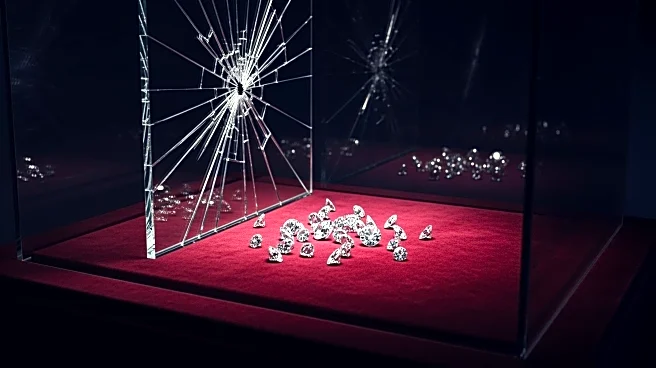What's Happening?
French police are urgently seeking to recover priceless jewels stolen from the Louvre Museum in a brazen daylight robbery. Thieves broke into the museum, stealing eight valued items before escaping on scooters. Experts fear the jewels may already be dismantled
and sold for a fraction of their worth. The heist is believed to be linked to organized crime, and authorities are using DNA evidence to track the perpetrators.
Why It's Important?
The theft represents a significant cultural loss for France, as the stolen jewels are considered national treasures. The incident raises concerns about the security of valuable artifacts in museums and the potential for organized crime to target cultural institutions. The stolen items, if not recovered, could be dismantled and sold on the black market, leading to a permanent loss of historical artifacts. The heist also highlights the ongoing challenges faced by museums in protecting their collections.
What's Next?
French authorities are intensifying their efforts to track down the thieves and recover the stolen items. The investigation involves reviewing surveillance footage and forensic evidence, and authorities are hopeful that the perpetrators will be caught. The museum may also reassess its security protocols to prevent future incidents. The public and cultural institutions are closely watching the developments, as the recovery of these artifacts is of national importance.
Beyond the Headlines
The heist underscores the vulnerability of cultural institutions to organized crime and the need for enhanced security measures. It also raises ethical questions about the preservation of cultural heritage and the responsibilities of museums in safeguarding historical artifacts. The incident may lead to increased collaboration between international law enforcement agencies to combat art theft.














